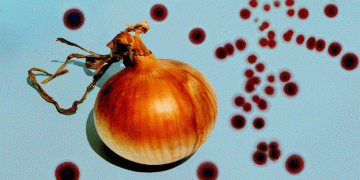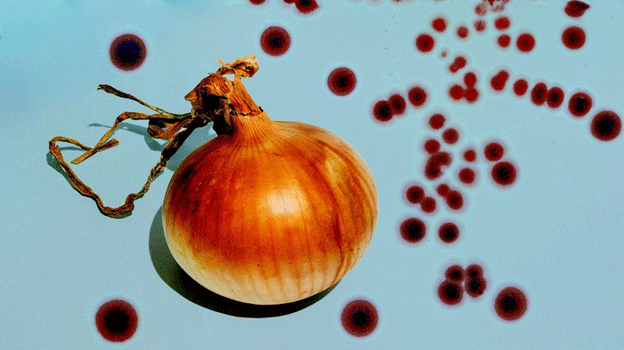When it comes to foodborne illnesses, most people are familiar with common culprits like leafy greens, sprouts, or raw poultry. Onions, however, have long enjoyed a reputation as a relatively safe food. Boasting natural antimicrobial properties, onions have historically been less associated with outbreaks. But recent data suggests that onions are becoming an unexpected source of illness across the United States.
The Surprising Rise in Outbreaks
In recent years, onions have been linked to multiple significant foodborne outbreaks. In one high-profile case, McDonald’s was forced to halt the sale of its Quarter Pounders in certain states after an E. coli outbreak. According to the Centers for Disease Control and Prevention (CDC), onions have caused four multistate outbreaks since 2020, sickening over 2,300 people. This spike contrasts sharply with historical figures; from 1998 to 2013, onions only caused 161 reported cases of illness, while leafy greens were responsible for more than 7,000 cases in the same period.
The rise in outbreaks is perplexing, particularly given the mechanisms that should protect onions from bacterial contamination. The CDC’s ongoing investigation into the latest cases points to contaminated slivered onions as a likely culprit. However, pinpointing the exact source of contamination remains a challenge.
Onions’ Natural Defenses and Their Limitations
Part of what has historically made onions safer than other produce is their natural defenses. Onions are known to contain antimicrobial compounds, including phenolic compounds, that have been shown in laboratory studies to inhibit the growth of harmful bacteria like E. coli and Salmonella. Onions also undergo a curing process after harvest. This process involves leaving onions to dry, often for weeks, which helps to extend shelf life and reduce bacterial presence. The ultraviolet rays from the sun and the drying effect of the air create an environment where bacteria struggle to survive.
Stuart Reitz, an onion expert at Oregon State University, has conducted experiments where onions were intentionally sprayed with E. coli-contaminated water. His findings indicated that the curing process eliminated much of the bacteria. However, approximately 2% of treated onions still retained detectable levels of E. coli after curing, suggesting that this method is not foolproof.
Linda Harris, a food safety professor at UC Davis, theorized that bacteria might bypass an onion’s papery skin through the green tops, potentially traveling down into the onion layers. Additionally, Michael Doyle, a microbiologist from the University of Georgia, pointed out that not all onions are equally effective in their antimicrobial action.
The Challenges of Controlling Contamination
The root cause of these outbreaks may lie in agricultural practices and environmental factors. Contaminated water used for irrigation, proximity to livestock, or wildlife intrusions are all potential culprits. Any processing step, such as slicing or packaging onions for ready-to-eat products, increases the risk of spreading bacteria.
Despite technological advances in food safety, including genome sequencing and blockchain tracing of crops, determining the exact cause of these outbreaks remains difficult. Regulators often fail to identify the source of contamination, as was the case with several past onion-related outbreaks. The complexity of food supply chains and the unpredictability of bacteria behavior make food safety a constant challenge.
The increase in onion-related foodborne illnesses is a concerning trend that has left experts and regulators searching for answers. While onions have long benefited from natural defenses and careful post-harvest handling, these measures are proving insufficient in the face of new and evolving risks. As scientists continue to investigate, the outbreaks remind us of the broader challenges in ensuring food safety. Perhaps it’s not just an onion problem, but a systemic challenge in agricultural practices and food distribution.
































